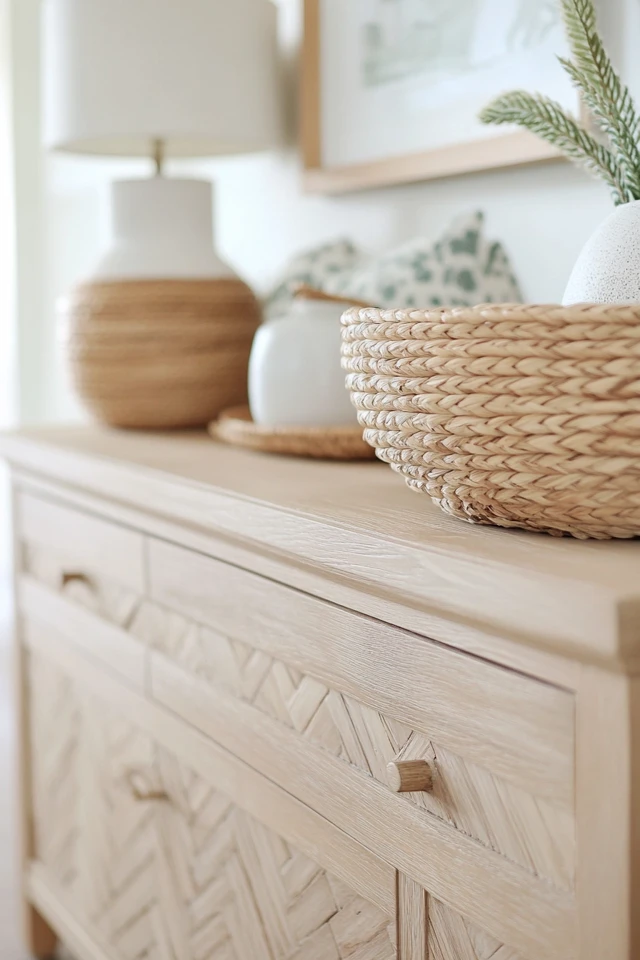Coastal decor is all about light, breezy spaces that evoke the serenity of the ocean. Pairing it with natural wood brings warmth, texture, and a touch of organic beauty to the design. The result? A perfect balance of fresh coastal vibes and grounded, earthy comfort.
I fell in love with this style when I moved into my first beachside apartment. It was a small space with tile floors and stark white walls—beautiful, but lacking personality. A driftwood coffee table was my first purchase, and it changed everything! I layered in wooden picture frames, a rattan bench, and a natural jute rug, which made the space feel warm and inviting while still reflecting the breezy coastal vibe I wanted. If you love that same mix of casual and chic, natural wood is your coastal decor best friend.
Here are 10 creative ways to seamlessly blend natural wood with coastal decor for a fresh and inviting home.
1. Start with Light Wood Tones
Why It Works:
Light-toned woods, like oak, birch, and maple, harmonize beautifully with the soft, airy palette of coastal decor.
How to Use It:
- Opt for light wood furniture, like a dining table or bedframe, to anchor the room.
- Use light wood picture frames or shelving for subtle accents.
- Pair wood tones with crisp white walls for a classic coastal backdrop.
Pro Tip: Look for wood finishes with a matte or natural texture to maintain a relaxed vibe.
2. Incorporate Driftwood Elements
Why It Works:
Driftwood naturally embodies the essence of the coast, adding texture and character to any room.
How to Use It:
- Add a driftwood mirror or wall art as a statement piece.
- Use driftwood candlesticks or bowls for smaller decorative accents.
- Choose a driftwood-inspired coffee table for a bold, coastal centerpiece.
Pro Tip: Keep driftwood pieces minimal to avoid overwhelming the space—less is more.
3. Layer with Rattan and Wicker
Why It Works:
Rattan and wicker bring a woven, textural element that complements both wood and coastal aesthetics.
How to Use It:
- Add a rattan armchair or wicker basket for functional storage.
- Use a woven pendant light to create a focal point.
- Incorporate rattan bar stools or dining chairs for a casual, beachy vibe.
Pro Tip: Mix woven pieces with solid wood furniture to create depth and variety.
4. Add a Wooden Accent Wall
Why It Works:
A wood-clad accent wall introduces warmth and texture while making a subtle yet striking statement.
How to Use It:
- Choose reclaimed wood planks for a rustic coastal look.
- Use whitewashed wood for a softer, more beachy feel.
- Create a feature wall behind the bed or in the living room for visual impact.
Pro Tip: Combine the wood wall with light, airy textiles to maintain a coastal balance.
5. Choose Jute or Seagrass Rugs
Why It Works:
Jute and seagrass rugs complement wood flooring or furniture while enhancing the natural, coastal aesthetic.
How to Use It:
- Place a large jute rug under your dining table or sofa to anchor the space.
- Use smaller seagrass rugs in entryways or hallways for texture.
- Pair the rug with wooden furniture for a harmonious look.
Pro Tip: Choose neutral-colored rugs to keep the focus on your wood elements.
6. Incorporate Weathered or Whitewashed Finishes
Why It Works:
Weathered or whitewashed wood mirrors the natural aging effect of wood exposed to salt air and sun.
How to Use It:
- Opt for weathered wood console tables or sideboards.
- Add whitewashed picture frames, mirrors, or shelves for subtle coastal accents.
- Use weathered wood panels or beams for architectural interest.
Pro Tip: Pair weathered finishes with clean, modern lines for a fresh, updated look.
7. Blend Coastal Blues with Wood
Why It Works:
Blue is a staple of coastal decor, and pairing it with natural wood creates a stunning contrast.
How to Use It:
- Use navy or aqua cushions on wooden chairs or sofas.
- Add blue and white striped bedding to a natural wood bedframe.
- Incorporate blue ceramic vases or art on a wooden shelf.
Pro Tip: Mix multiple shades of blue for a layered, ocean-inspired palette.
8. Use Natural Wood Dining Tables or Coffee Tables
Why It Works:
Wooden tables act as grounding elements in light, airy coastal spaces.
How to Use It:
- Opt for a raw-edge wooden dining table for a dramatic focal point.
- Choose a wooden coffee table with clean lines for a modern coastal look.
- Pair the table with upholstered chairs or a jute rug for added texture.
Pro Tip: Keep tabletop decor minimal—add a vase of fresh flowers or a tray with candles for simplicity.
9. Incorporate Bamboo Accents
Why It Works:
Bamboo adds an eco-friendly, lightweight touch that feels natural and breezy.
How to Use It:
- Use bamboo blinds or shades to soften windows while maintaining privacy.
- Incorporate bamboo trays, serving dishes, or plant stands.
- Choose bamboo frames for mirrors or artwork.
Pro Tip: Bamboo pairs beautifully with neutral linen or cotton textiles for an effortlessly coastal look.
10. Highlight Wooden Ceiling Beams
Why It Works:
Exposed wood beams add architectural interest and emphasize the natural, rustic side of coastal decor.
How to Use It:
- Keep beams in their natural wood tone for contrast against white ceilings.
- Pair beams with pendant lighting to draw the eye upward.
- Use wood beams to frame large windows or open spaces for added character.
Pro Tip: Balance the look with lighter, more delicate coastal furniture to avoid heaviness.
Picture Gallery
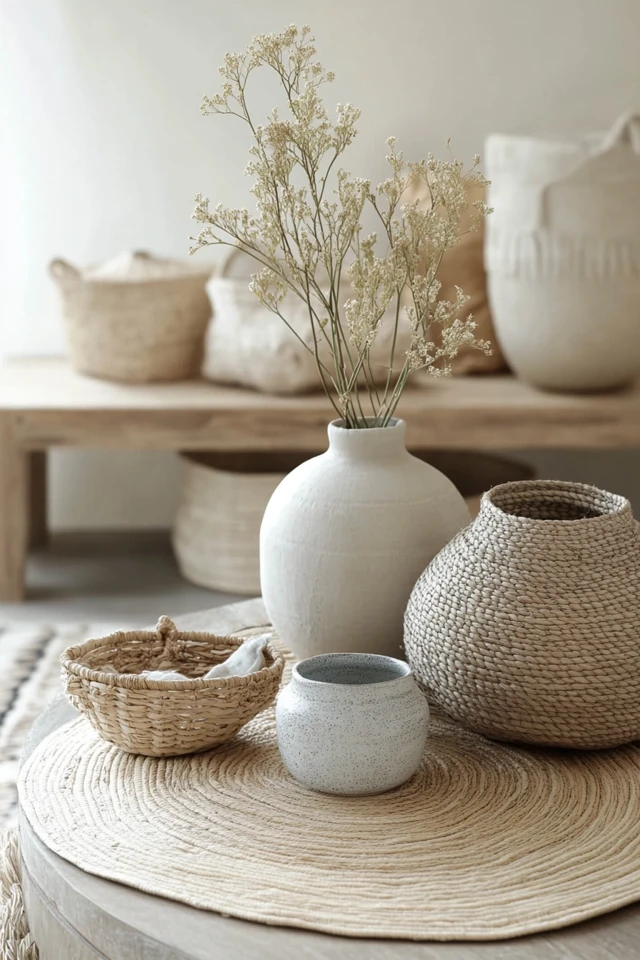
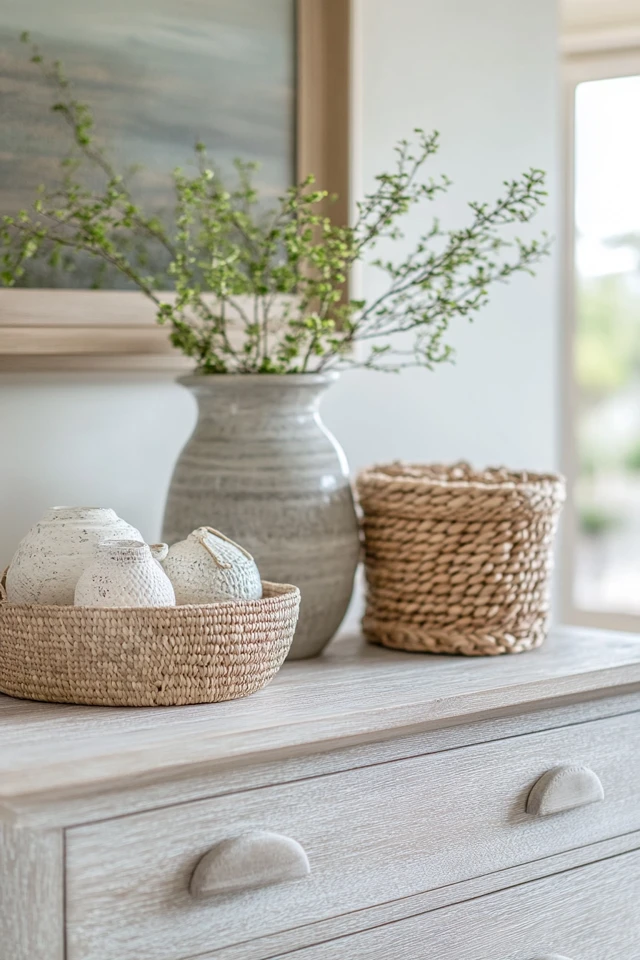
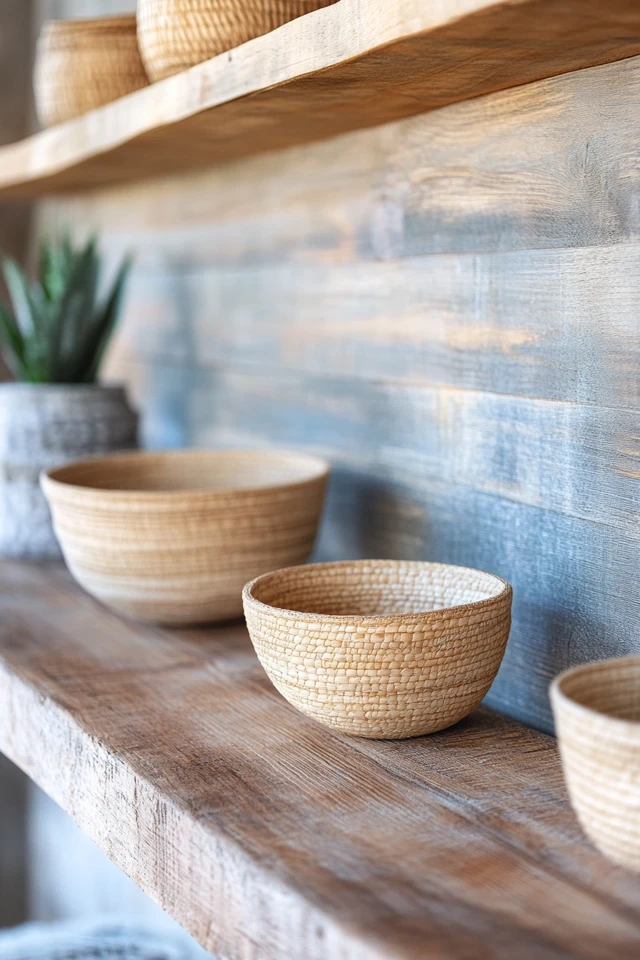
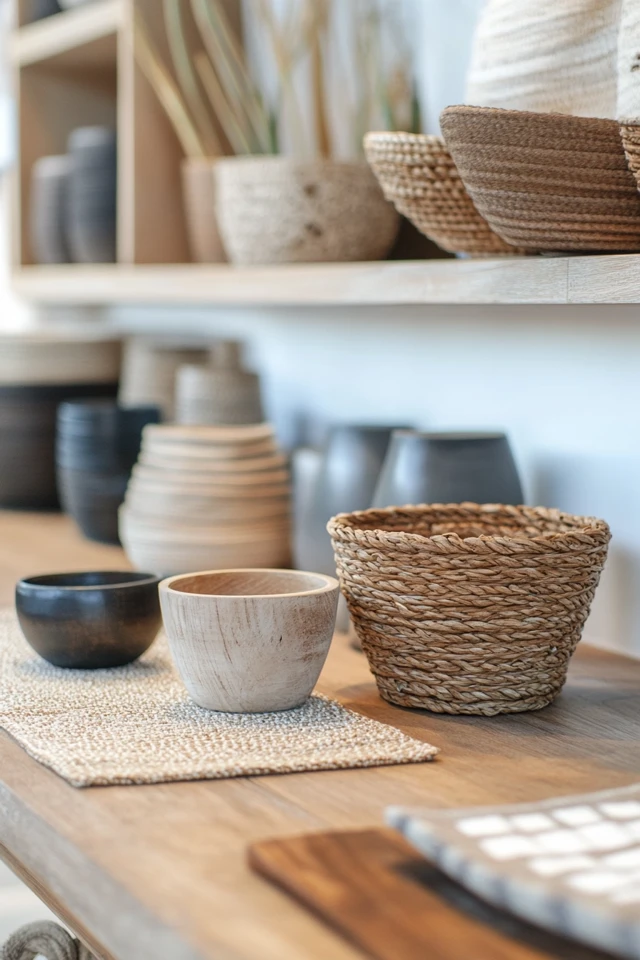
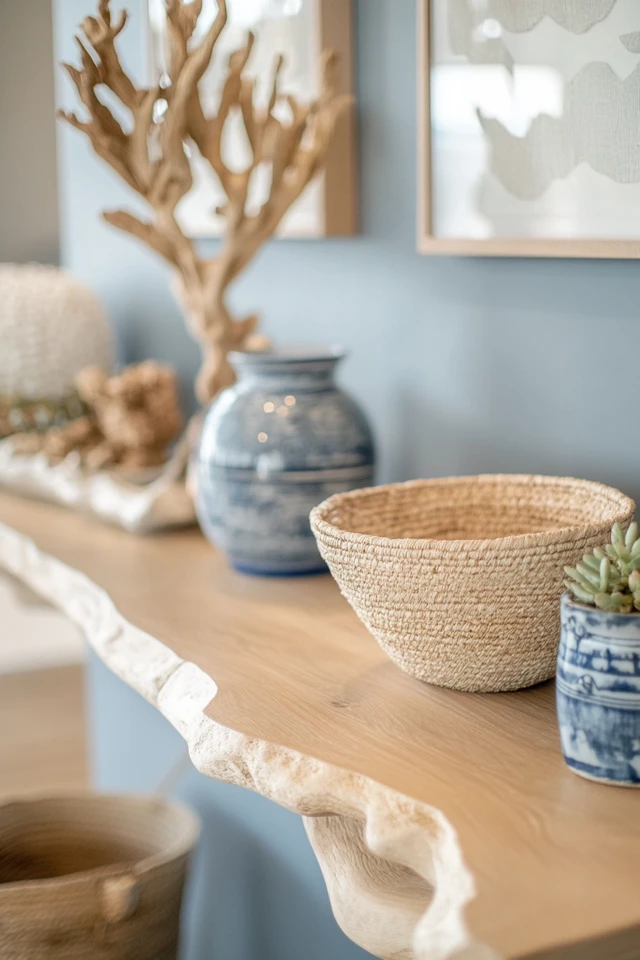
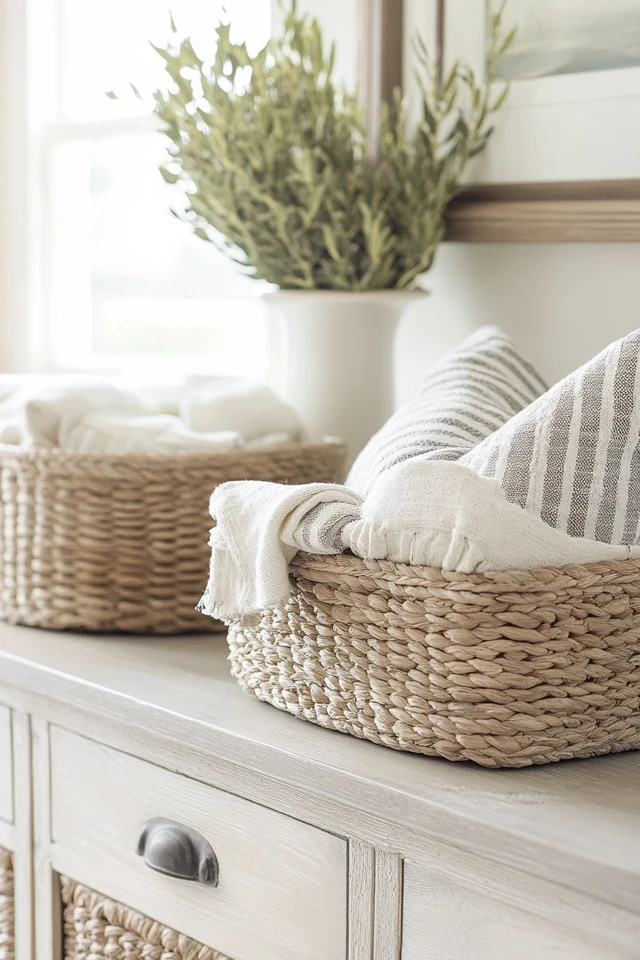
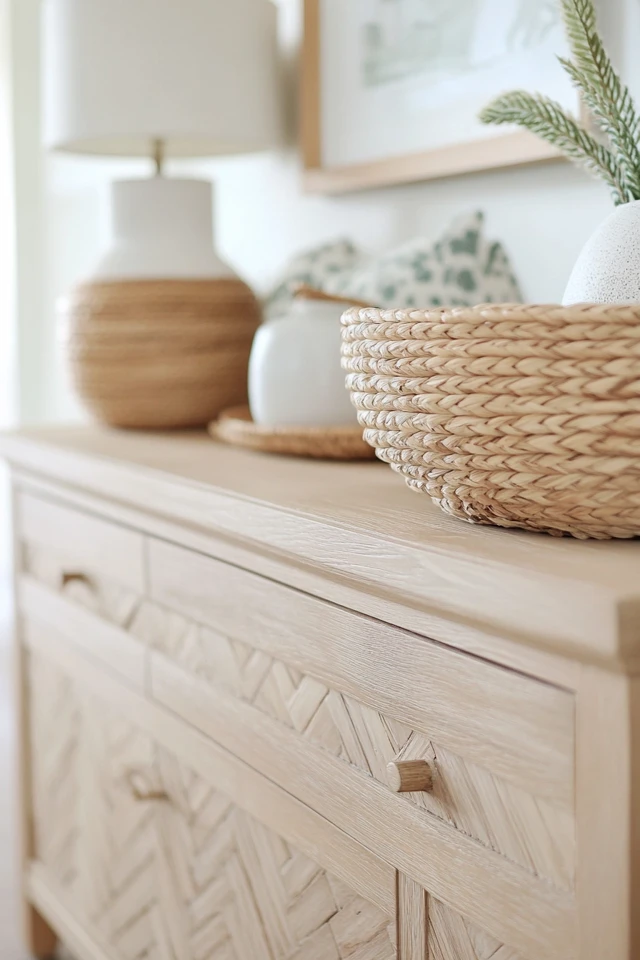
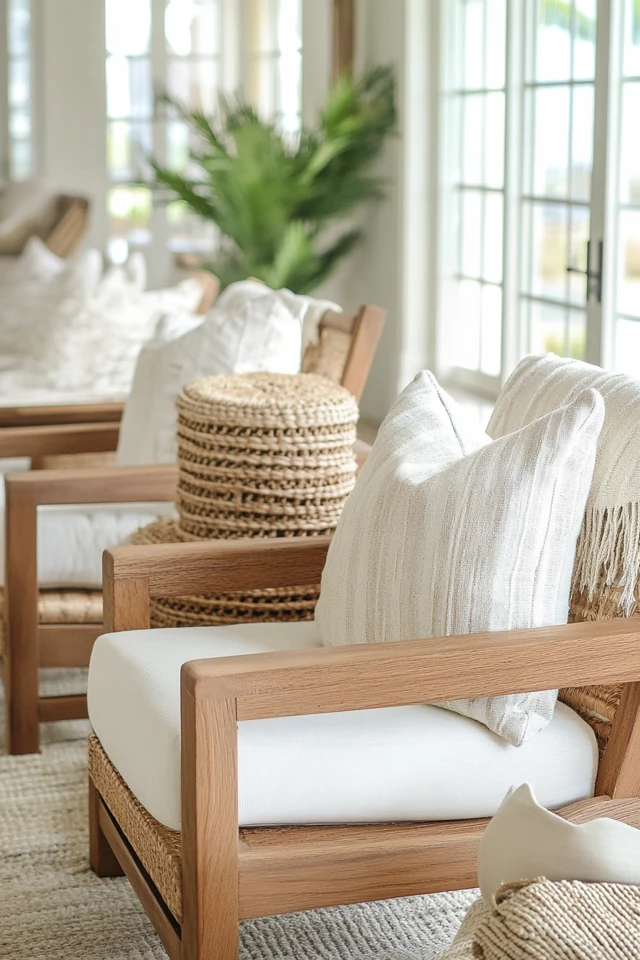
Conclusion
Mixing natural wood with coastal decor is all about balance. Natural wood brings warmth and texture, while coastal elements keep the space light and breezy. Whether you incorporate driftwood, rattan, or weathered finishes, the goal is to create a harmonious blend of nature-inspired materials that evoke a sense of calm and relaxation.
As someone who loves the ocean and everything it represents, this design style is close to my heart. It’s an invitation to escape the hustle of daily life and bask in the serene vibes of a seaside retreat—all from the comfort of home.
So, grab that driftwood mirror, layer on the rattan textures, and let your inner beachcomber shine. Your dream coastal-wood fusion space awaits!
FAQs
1. Can I use dark wood in coastal decor?
Yes, but use it sparingly. Dark wood adds depth, but it’s best paired with lighter tones to maintain the airy, coastal feel.
2. What’s the difference between driftwood and weathered wood?
Driftwood refers to natural wood found by the ocean, while weathered wood is any wood that has been artificially or naturally aged to look rustic. Both work beautifully in coastal decor.
3. How can I add coastal wood elements without buying new furniture?
Try incorporating wooden accessories like picture frames, trays, or small decor items. Bamboo blinds or a driftwood lamp are great budget-friendly options.
4. What colors pair well with natural wood in coastal design?
Whites, soft blues, aquas, sandy beiges, and even pale greens pair beautifully with natural wood for a coastal-inspired look.
5. How do I keep a coastal wood room from feeling too rustic?
Balance rustic wood elements with polished decor, such as glass accents, clean-lined furniture, or sleek lighting fixtures, to maintain a refined coastal aesthetic.

